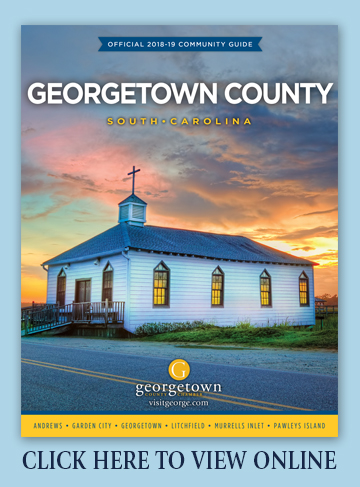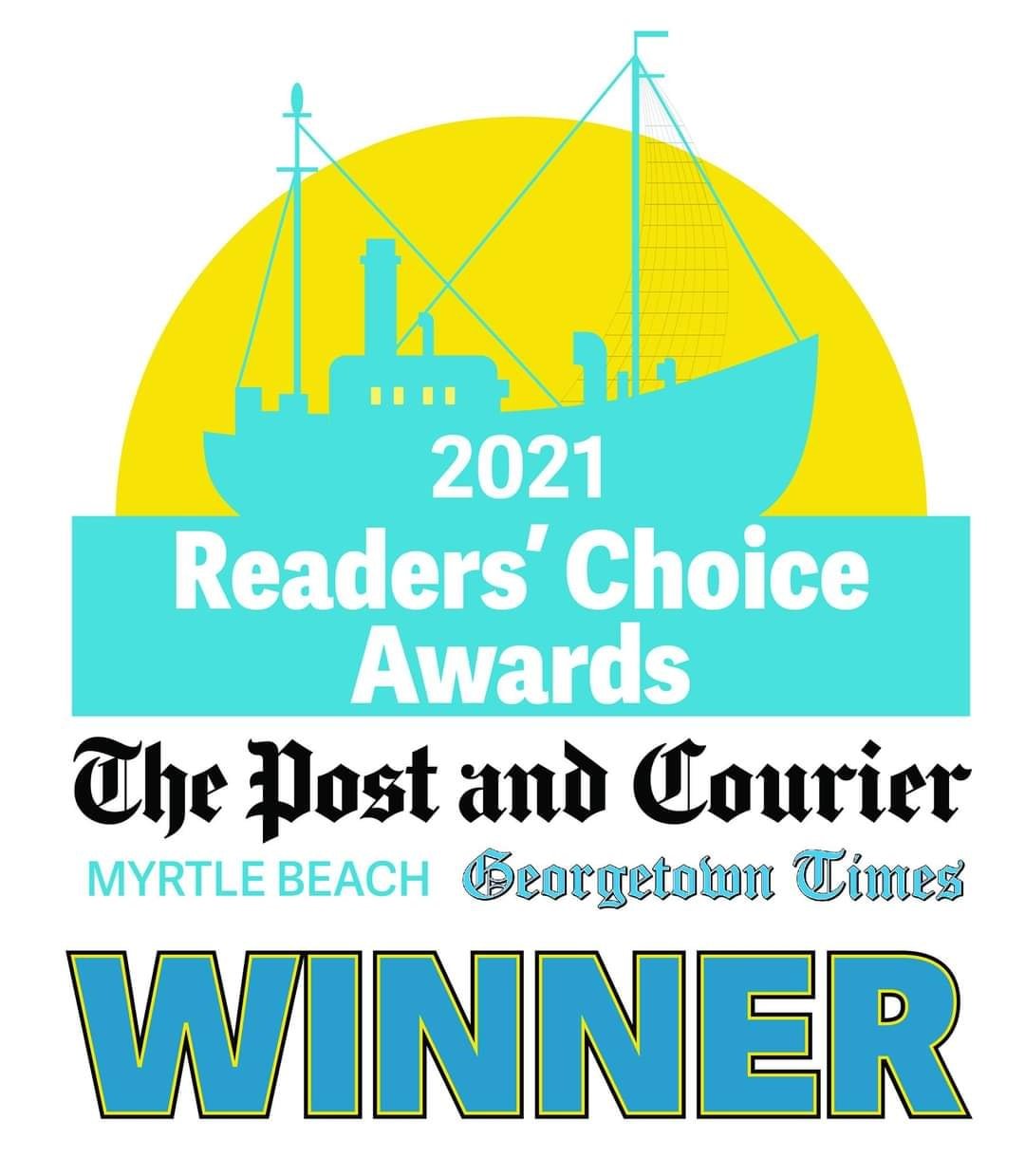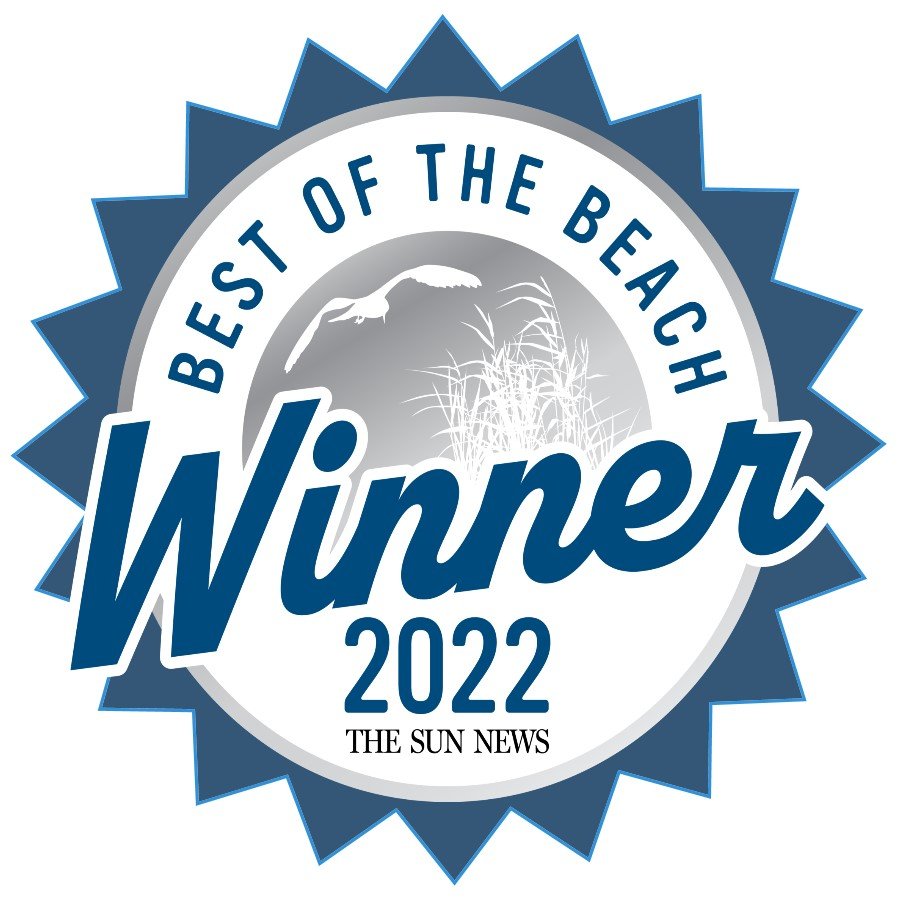Tom Yawkey Wildlife Center Heritage Preserve
Thanks to Tom Yawkey’s vision of preservation, the Tom Yawkey Wildlife Center Heritage Preserve boasts miles of untouched beaches and land. Our Shelling & Lighthouse Cruise lets you explore the Wildlife Center’s North Island, an undeveloped barrier island closed to the public.
North Island has always been the beacon from the sea leading toward Georgetown, South Carolina. It was an island of exploration for the Spanish in 1526 and the first landing place of Lafayette, France's hero of the American Revolution, in 1777. It was a summer resort for aristocratic rice planters and their slaves from Georgetown and Waccamaw Neck until 1861. North Island's lighthouse, built in 1812, led thousands of sailing ships from all over the world past massive stone jetties and through Winyah Bay to Georgetown. Today, North Island is a sanctuary and laboratory for the study of nature's effects on this unique barrier island. – Robert McAlister, historian and author of “Georgetown’s North Island”
The Wildlife Center encompasses three coastal islands located at the mouth of Winyah Bay in Georgetown County, SC: North Island, South Island, and the majority of Cat Island. Spanning about 31 square miles of varying landscapes, habitats include ocean beaches, maritime forests, managed wetlands, marshes, swamps, and longleaf pine forests. It is home to a large population of alligators and the beaches are nesting sites for endangered loggerhead sea turtles. Animals that roam the Wildlife Center include bobcats, deer, racoons, butterflies, otters, snakes, and fox squirrels. one of the most outstanding gifts to wildlife conservation in North America, the Tom Yawkey Wildlife Center was willed to the SC Department of Natural Resources in 1976 by the late Tom Yawkey.
Rover Tours’ Shelling & Lighthouse Cruise offers a rare opportunity to view magnificent waterfowl in their natural habitat at the Tom Yawkey Wildlife Center which is not open to the public. As you glide along the smooth waters, you’ll view some of the nearly 200 bird species that live here seasonally and perennially. Watch as seabirds and shorebirds soar overhead, while waterfowl and waterbirds wade along or gather on the shores. The cruise also includes observation of the active North Island Lighthouse, the state’s oldest lighthouse constructed in 1812.
History: About Tom Yawkey
The history of the present-day the Tom Yawkey Wildlife Center has seen it change from a hunting preserve to a waterfowl refuge over the last century. Tom Yawkey is largely responsible for the Wildlife Center’s current status as an important waterfowl refuge along the Atlantic Flyway and a location where crucial conservation field research can take place.
Tom Yawkey was the owner of the Boston Red Sox from 1933 to 1976. Originally from Detroit, he had grown up in New York City with his mother and his uncle William after the death of his father. As a child, Tom visited the land his uncle owned in Georgetown County, and he developed a great appreciation for nature and wildlife.
In 1918, Tom inherited the land from his uncle. He continued his regular visits to the area, and by 1926 he had purchased the rest of the land and began managing it primarily as a game preserve for waterfowl. He would later bring on professionals to help him with the land management. Tom and his wife Jean spent their winters on the property and considered the Georgetown community their second home.
When Tom Yawkey died in 1976, he willed his 20,000 acres of land to the South Carolina Department of Natural Resources. During the 50 years before he died, Tom had cared for the land with his own conservation practices to improve and restore the property for wildlife and waterfowl, and he entrusted the SCDNR to continue managing the land he loved so dearly.
Tom’s will also established the Yawkey Foundation to fund the care of the land and stipulated that it must continue to be used as it had under his ownership, which meant that it would remain closed to the public. Jean Yawkey later contributed more land to the Tom Yawkey Wildlife Center, and it now spans more than 24,000 acres.
The Yawkey Foundation continues to partner with the Wildlife Center while also focusing on additional areas of giving to support the causes and organizations that were important to the Yawkeys. Tom and Jean wholeheartedly believed in helping those who need it most and gave generously to many individuals, nonprofits, and organizations. The Yawkey Foundation perpetuates this legacy through its six areas of giving: wildlife and conservation, education, arts and culture, youth and amateur athletics, human services, and health care. Follow the Yawkey Foundation on social media to learn more about its latest partnerships with the Tom Yawkey Wildlife Center: Facebook, Twitter, Instagram, and YouTube
Rover Tours is committed to helping educate the public and preserving South Carolina's fragile wetlands and ecosystems today, because we care about tomorrow.








